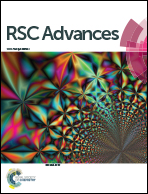A free-standing VN/MXene composite anode for high-performance Li-ion hybrid capacitors†
Abstract
The Li-ion hybrid capacitor (LIHC) is considered as a promising candidate for electrochemical energy storage owing to the high energy and power density. However, the sluggish anodic reaction kinetics and high reaction voltage greatly hinder the overall performance of LIHCs. Herein, a free-standing VN/MXene composite anode with high specific capacity and low reaction voltage was prepared by a simple vacuum filtration method. The obtained VN/MXene composite anode shows a high discharge specific capacity of 501.7 mA h g−1 at 0.1 A g−1 and excellent rate capability (191.8 mA h g−1 at 5 A g−1), as well as much extended cycling stability (1500 cycles at 2 A g−1). When combined with an egg white-derived activated carbon (E-AC) cathode, the assembled LIHC delivers a high specific capacity of 59.1 F g−1 and a high energy density of 129.3 W h kg−1 with a power density of 449.7 W kg−1. Even at a high current density of 5 A g−1, the LIHC still maintains an exciting energy density of 42.81 W h kg−1 at 11 249 W kg−1. Meanwhile, the cycling life can be extended to 5000 cycles with a high capacity retention of 98% at 1 A g−1. We believe that this work opens up new possibilities for developing advanced free-standing MXene-based electrodes for Li-ion storage.



 Please wait while we load your content...
Please wait while we load your content...